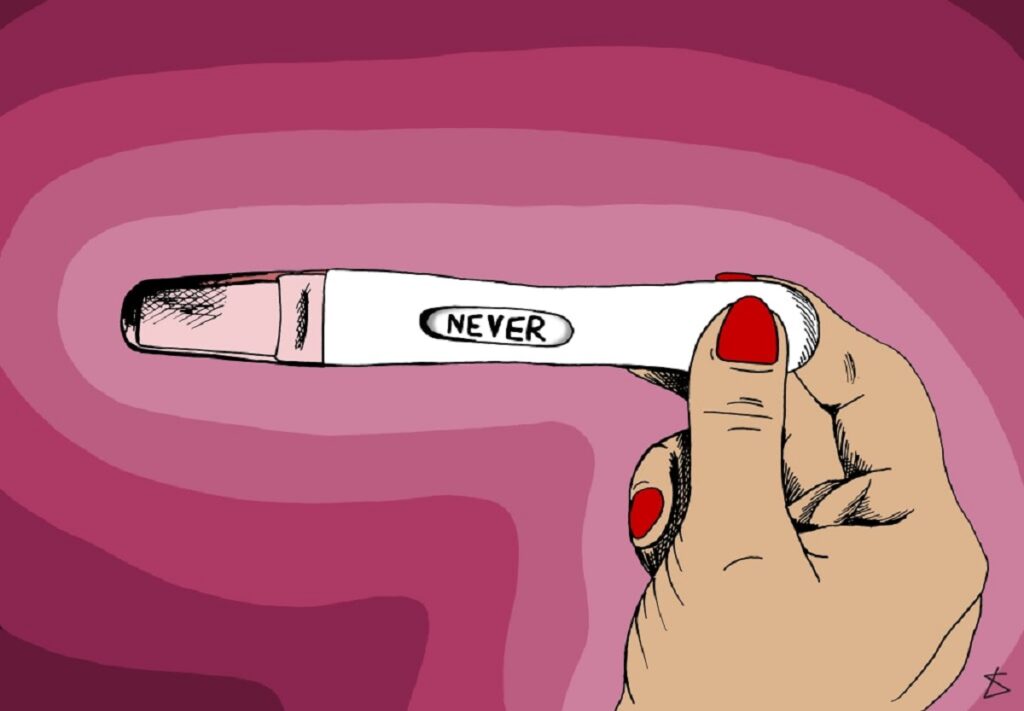


Introduction
The ease with which couples can become pregnant and have a child together varies greatly. Some couples may wait several years before the "happy event" occurs, and for some couples, it unfortunately never happens.
When a couple has tried to conceive a child for one year without a result, they may come under the category of "involuntary childlessness", and may hereafter be offered treatment for this through the public hospital service.
The possibility of having children together depends, among other things, on the "fertility" of the man and the woman. The concept of fertility is closely linked to the concept of "childlessness", which is, unfortunately, being experienced by more and more couples.
Childlessness is more complicated than that, though. A couple may have had a child together previously without difficulty, but just as suddenly find they cannot. These couples suffer from "secondary infertility". Other couples may each have had a child with a previous partner/spouse, but cannot have a child together. This condition is called limited fertility and occurs because the couple's fertility is the total of the two partners' fertility.
Nowadays, many methods have been developed to help couples suffering from "childlessness". For couples experiencing difficulties in becoming pregnant, there will, however, under any circumstances often be high emotional costs - this applies to both the man and the woman.
Infertility in the man
Generally speaking, men's sperm quality has fallen during the course of the last 50 years. There is nothing definite to explain why this has happened.Infertility in men can be attributed to several conditions. Sperm cells are very vulnerable cells. They take seven weeks to develop, and they can be exposed to external influences at any stage of their development.
One of the reasons for a man's infertility may be the production of too few sperm cells. Too few sperm cells do not always mean a lack of fertility, but the low number of sperm cells is often due to the fact that the majority of them are defective or lack mobility (abnormalities).
Too few sperm cells and abnormalities in the sperm cells can be caused by hormonal problems, anatomical problems and/or immunological problems. All of the body's hormones work in close cooperation, which means that the majority of the body's hormones may be the reason why too few sperm cells are produced. It is thus not only the male sex hormones that are decisive in sperm production but the pancreatic hormones, for instance, also influence this.
The anatomical problems can, for example, be a varicocele, or a testicle that has not been in position in the scrotum from birth, but only drops (or is surgically brought down) later in life. Another problem may be that the man empties his sperm into his own bladder instead of into a woman's vagina (retrograde ejaculation).
Immunological problems occur if the man himself forms antibodies that kill the sperm cells.
Environmental factors
Smoking, alcohol and stress can for example, affect the quality and quantity of the sperm. If a man produces sperm in only small amounts in advance, the number of sperm cells will be further reduced if he drinks or smokes a great deal or if he is suffering from stress.
Heat can be a problem for the sperm cells, as sperm cells survive best at a temperature of 35 degrees. Tight-fitting pants, frequent visits to the sauna or high fever can therefore be factors that contribute to a man's fertility problems.
Furthermore, caffeine is considered to be able to cause defects in the sperm cells, and men should therefore not take in excess coffee, cola or other drinks containing caffeine during the period in which they are trying to conceive a child.
Hash, cocaine and other similar substances reduce the number of sperm cells and their mobility very drastically, just as the intake of such substances will substantially increase the number of defective sperm cells.
Investigating a man's fertility
There are a number of ways in which you can investigate a man's fertility. The ability of the sperm cells to fertilize an egg can, for example, be investigated by what is known as a "sperm mucus penetration test", where a microscope is used to investigate the way in which the sperm cells and secretion from a woman's cervix react together.
You can also purchase a sperm quality test, where you yourself can test your sperm quality at home. These tests measure the number of sperm cells and can thereby indicate whether a man is fertile or infertile. It cannot, however, analyze the individual sperm cell's mobility and any defects.
Infertility in a woman can be attributed to many different factors, including hormonal factors.
Lack of ovulation
Lack of ovulation is the most frequent reason for a woman not becoming pregnant. The lack of ovulation is generally attributed to hormonal problems, but the reason may also be defective ovaries, or purely and simply that there aren't any eggs - which is very seldom the case, though.
During the normal menstrual cycle, hormones ensure that the egg cells grow and develop. In many infertile women, however, there may be too many or too few of these hormones, which may mean that the eggs are either not released or have not matured sufficiently for them to be fertilized.
The fallopian tubes
Fertilization of the egg occurs in the fallopian tubes, whereupon the egg passes further down into the uterus.
The fallopian tubes are thin tubes, and passage through them can easily blocked, for example, in connection with infection or the condition of endometriosis, where the interior uterus wall grows out into the pelvis.
If the fallopian tubes are blocked, the egg cannot pass down into the uterus, which will result in either the fertilized egg perishing or starting a pregnancy outside of the uterus. Pregnancy outside of the uterus can be life-threatening for both mother and fetus.
The uterus
The uterus is the "cavity" in which the fertilized egg settles and where the placenta later develops. The fetus is therefore formed here.
Some women have anatomical conditions that mean that the egg cannot settle, which is why it is not possible for them to become pregnant.
Some women are born without a uterus.
The cervix
In order to be able to become pregnant, the sperm cells must be able to pass through the cervix to be able to fertilize the egg.
The cervix contains a thick mucous that normally protects against infection. In some women, however, this mucous can become so thick that the sperm cells cannot pass through.
Investigating a woman's fertility
When a woman's fertility is to be investigated, the first thing to find out is whether she ovulates. If this is the case, you want to continue with other investigations.
If you go to the doctor, you will be instructed on how to run a temperature curve over a 3-month period. You will hereby be able to see whether body heat temperature increases around the time of ovulation and remains higher for the rest of the month. If it does this, you ovulate regularly (see further details in the article entitled "The Temperature Method").
Ovulation occurs as a result of a strong increase in the body's production of LH (Luteinizing Hormone). LH can be detected in your urine. A woman can therefore find out when she has the greatest chance of becoming pregnant by measuring the increase in the concentration of LH in your urine. This principle is operated when using ovulation tests. Ovulation tests are a safer method than the Temperature Method to investigate if and when you are ovulating, but the two methods can be combined to your advantage.
Ovulation can furthermore be checked by a progesterone blood test. The content of progesterone in the blood will be able to indicate whether ovulation has taken place.
In addition to investigating ovulation/hormones, a woman's fertility is investigated by a closer analysis of the fallopian tubes. The fallopian tubes are as mentioned above thin "tubes", and they can very easily become damaged. Almost 50 percent of the women examined because of childlessness are shown to have problems with their fallopian tubes.
Environmental factors
There are several environmental factors that can play a role in a woman's fertility, including obesity / being underweight, caffeine (of which there are often large amounts in slimming products), tobacco smoking and alcohol.
Furthermore, a woman's age plays a considerable role. Women are most fertile when they are between 15 and 25 years of age. Thereafter, their fertility falls gradually until their mid-thirties, whereupon it falls significantly before disappearing totally.
When is a woman most fertile?
The following table shows the period of the cycle in which a woman is most fertile. The percent chance/risk of becoming pregnant in a 28-day cycle. Days 12, 13, 14 and 15 are the most fertile days in the whole of a woman's cycle.
Cycle day 01 02 03 04 05 06 07 08 09 10 11 12 13 14
% chance/risk 0 0 0 0 0 0 0,1 0,7 2,5 5,5 10,5 14,6 16,9 17,3
Cycle day 15 16 17 18 19 20 21 22 23 24 25 26 27 28
% chance/risk 14,3 9,1 4,9 1,9 0,5 0,1 0 0 0 0 0 0 0 0
Note: Please also check your spam or junk email folder.